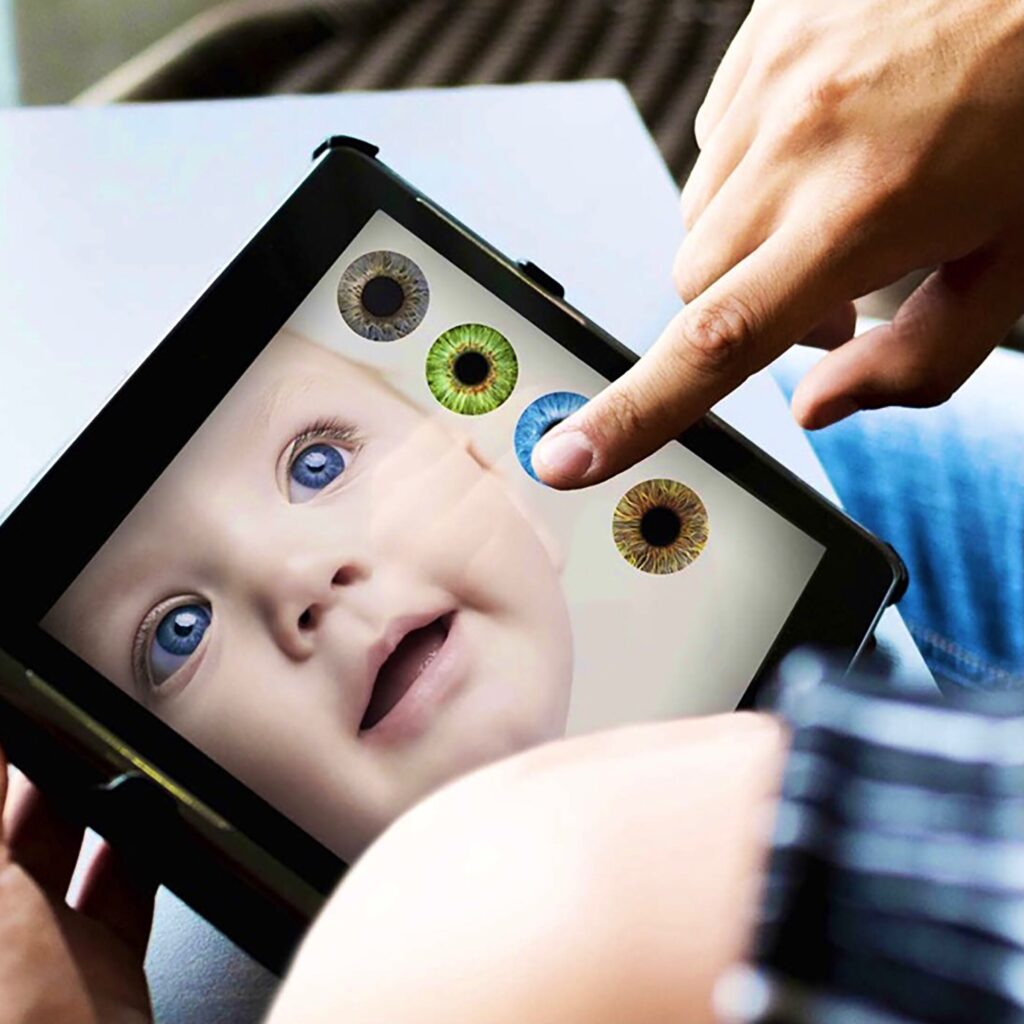Are you serious designer babies? What is CRISPR and can it disrupt the healthcare industry? Design a baby or fix your chronic illness right from a mobile app, well maybe not just yet but the technology to execute this is already on its way.

The world we live in might not look like The Jetsons, but we are living in the future in many ways. We’ve already got smartphones, and smart homes quickly followed. Augmented reality has expanded the horizons of video games, and virtual reality is poised to change the lives of people living with disabilities. What’s next? Smart genes? You might be shocked to learn that a technology called CRISPR promises exactly that!
While “Clustered Regularly Interspaced Short Palindromic Repeats” might be a mouthful, CRISPR is a little easier to say. CRISPR are a naturally occurring sequence of repeats in simple living creatures such as some bacteria. While bacteria use CRISPR as an immune defense against other organisms, humans discovered that CRISPR could be used to target genes of pretty much any living creature, including us!
Through a method known as CAS-9, CRISPR can essentially be used to edit genes from DNA, similar to how you can cut text from Word documents. Researchers have since been able to use CRISPR to cut genes out entirely and cut out faulty genes to replace them with functional ones. That’s right, CRISPR lets us copy and paste our DNA.
CRISPY isn’t just a novel new technology. It represents some pretty important possibilities. For example, CRISPR can be used to disrupt the faulty DNA that leads to diseases such as Huntington’s, which is caused by a mutation in a gene and has been difficult to treat up until now. Not only does Huntington’s decrease the quality and length of life, but parents can pass the disease to their children. If CRISPR can remove faulty genes, people who would otherwise develop Huntington’s disease and avoid having children who might do the same can live happily and healthily with a brood of their own.
That’s just one example of the power of CRISPR. Researchers are hard at work determining the different ways that CRISPR (and CAS-9) can work for us. Many are hopeful that CRISPR can be used with CAR-T, a method used alongside genetic therapy to boost the patient’s own immune cells to fight cancer. Jens-Ole Bock of COBO Technologies Aps, which focuses on DNA technology, expressed hope over this combination:
Focus now is on different types of blood diseases and cancer treatment using CAR-T. We have now more than 70 trials ongoing in the clinical phase and initial safety data from these trials are looking promising.
Kevin Doxzen, Ph.D., expressed similar sentiments about the potential that the “development of CRISPR and other genome engineering technologies is moving modern medicine towards personalized therapeutics and away from a one-size-fits-all approach to healthcare. The ability to precisely locate and alter a specific genetic sequence is opening the door to treating a range of previously untreatable diseases, especially rare genetic diseases.” Who’s to say what uses we’ll find for CRISPR in the future?
In fact, some researchers are already investigating whether CRISPR can be used to created so-called “designer babies.” Considering that researchers in China have already tested CRISPR on embryos to produce babies resistant to HIV, smallpox, and cholera, is it a leap to wonder if they could identify other traits that some people might find undesirable to edit them right out of embryos before implanting them. Given that the 23&Me app can already tell us what genes we might pass on to our children, the idea doesn’t sound that farfetched at all! Who could have predicted this? The writers of Gattaca, for one.
However, while it might be possible for CRISPR to create “designer babies” in the future, many medical experts are skeptical. For example, Bock expressed disbelief that CRISPR technology would move in this direction based on current research efforts.
All trials today are in somatic cells and focus is to treat well-characterised genetic diseases that will have a significant impact for the patient and the patient group. Because we learn more and more about the genes involved in different diseases, it will make sense to do more pre-screening of germ cells and thereby we could exclude many potential genetic diseases to move to the next generation. However some genetic disease we can not predict and “capture” on in pre-screening and therefore we need tools like CRISPR to be able to cure future genetic diseases in this group of patients
Of course, there’s always someone who wants to capitalize on new tech, which means that we’re pretty much guaranteed that someone will step in to fulfill the role of designing babies with CRISPR in the future. But most researchers understand the significance of treating or even preventing cancer and other diseases that severely impact–and shorten–a patient’s life. With such important work already underway, there’s no use fretting over the potential misuses of CRISPR when the technology will have such long-reaching benefits.
The success of our agency is built upon our clients’ growth. If you want to discuss your next project or be interviewed and featured in our next series of “Project Venus,” contact Colure’s Mobile App Development Team.

